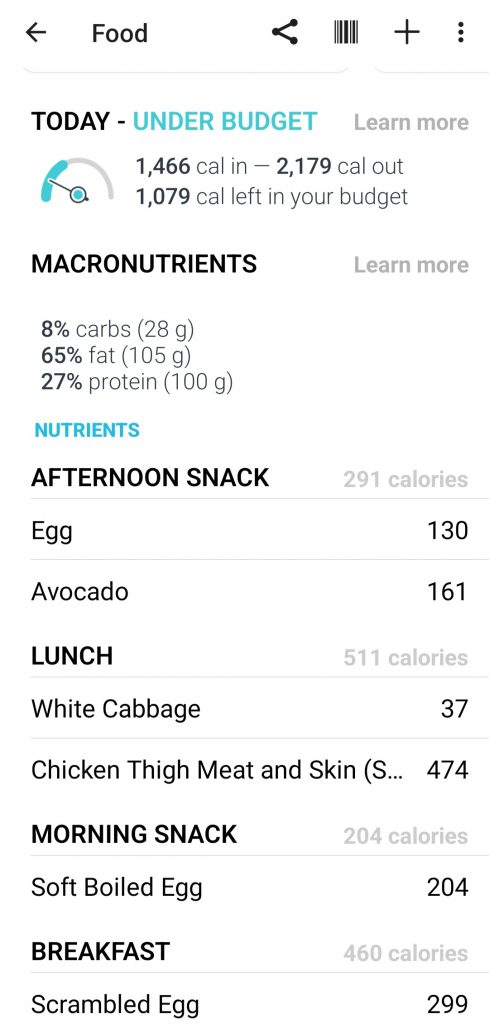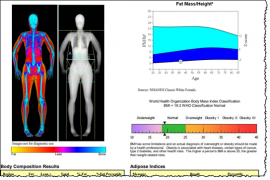Just had your DEXA body scan and wondering what to do next? We got you. Embarking on a fat loss and body recomposition journey requires dedication, discipline, and a well-designed plan. To achieve your goals effectively, it’s crucial to understand your body composition and make informed decisions based on accurate data.
You have already taken the first step by harnessing the power if the cutting-edge medical imaging technique that is DEXA. By providing detailed insights into your fat, muscle, and bone mass, a DEXA scan becomes an invaluable tool for those seeking to shed fat, gain muscle, and transform their bodies. In this article, we will explore how you can take your DEXA body scan results and use them to shape a comprehensive nutrition and exercise strategy.
11 Step Cheatsheet To A Better Body and Health Following A DEXA Body Scan
With your DEXA scan results in hand, you can follow the 11-step strategy below to move yourself towards your ideal
DEXA Body Scan Analysis
Review the DEXA body scan results to identify specific areas of concern and set realistic goals based on the distribution of fat and muscle in the body. Take note of the body fat percentage, lean muscle mass, and bone density measurements. A healthcare professional or registered dietitian can help interpret the results accurately.
Caloric Deficit
Create a caloric deficit by adjusting daily energy intake. Start by estimating your Total Daily Energy Expenditure (TDEE) using a reliable online calculator or consult a professional. Then aim for a moderate deficit of 500-750 calories per day. Monitor progress and adjust calorie intake as needed.
Macronutrient Balance
Ensure a balanced macronutrient intake to support fat loss and muscle gain:
- Protein: Consume around 1.6-2.0 grams of protein per kilogram of body weight. Include lean sources like chicken, turkey, fish, eggs, tofu, and legumes.
- Carbohydrates: Prioritise complex carbohydrates from sources like whole grains (oats, brown rice), fruits, and vegetables for sustained energy and nutrient intake.
- Fats: Choose healthy fats from sources such as nuts, seeds, avocados, olive oil, and fatty fish like salmon. Limit saturated and trans fats.
DEXA Body Scan and Meal Planning
Plan meals that are nutrient-dense, filling, and enjoyable. Planning ahead means there is little room to eat something that’s not on the plan. In addition, you can keep better track of your calorie intake if you are planning your meals in advance.
Here’s a sample daily meal plan:
- Breakfast: Veggie omelette with egg whites, spinach, tomatoes, and mushrooms + wholegrain toast. (my personal favourite is scrambled eggs with avocado and cheese).
- Morning Snack: Greek yoghurt with berries and a handful of almonds.
- Lunch: Grilled chicken breast with quinoa and roasted vegetables.
- Afternoon Snack: Carrot sticks with hummus.
- Dinner: Baked salmon with steamed broccoli and sweet potato.
- Evening Snack: Protein shake or cottage cheese with sliced fruit.
The other advantage of planning your meals is that you don’t have to count calories every time you have a meal. You count your calories as you prepare and portion out your meals and enter them into your calorie-tracking app or notebook. I use the Fitbit app on my Samsung Galaxy phone and you can see a sample of my meals in the screenshot on the right.
Hydration
Ensure adequate hydration by consuming at least 2-3 litres of water per day. Carry a water bottle with you as a reminder. Water should be the primary beverage choice. Include herbal teas and limit sugary drinks. One cool way of keeping track of your hydration is to use a 1-gallon water bottle which you can carry everywhere with you.
I carry mine wherever I go and it’s always a handy reminder each time I see it to get some water down.
Resistance Training
Implement a structured resistance training program to promote muscle growth and strength development. Aim for 3-4 sessions per week, targeting all major muscle groups. Include exercises such as squats, deadlifts, bench presses, rows, and overhead presses. Gradually increase weight and challenge yourself. Seek guidance from a certified personal trainer if needed.
Cardiovascular Exercise
Incorporate cardiovascular exercises to enhance calorie expenditure and cardiovascular fitness. Perform moderate-intensity cardio sessions for 30-45 minutes, 3-4 times per week. Examples include jogging, cycling, swimming, or using an elliptical machine. Vary the type of cardio to prevent boredom and optimise results.
While cardio may have positive health outcomes, it is not necessary for fat loss. Focus on the calorie balance, ensuring you’re in a caloric deficit first and foremost, secondly, you are hitting your macros and finally resistance training and cardio in that order.
High-Intensity Interval Training (HIIT)
Incorporate HIIT workouts into the routine to maximise calorie burn and improve metabolic conditioning. Perform short bursts of high-intensity exercise alternated with periods of active rest. This can be done 1-2 times per week. Examples include sprints, jump squats, burpees, or circuit training.
Active Lifestyle
Encourage overall physical activity outside of structured workouts. Engage in activities like walking, taking the stairs, or participating in recreational sports to increase daily calorie expenditure. Aim for at least 10,000 steps per day. Incorporate movement breaks throughout the day if you have a sedentary job.
Recovery and Sleep
Prioritise recovery and ensure adequate sleep of 7-9 hours per night. Sufficient rest is essential for muscle repair, hormonal balance, and overall well-being. Practice relaxation techniques such as stretching, yoga, or meditation to manage stress.
Monitoring and Adjustments
Regularly track progress using the DEXA scan for body fat or other appropriate measurements. Adjust the nutrition and exercise plan as needed to ensure continued progress towards the desired fat loss and muscle gain goals. Seek guidance from a healthcare professional or registered dietitian to optimise adjustments.
Conclusion
Embarking on a fat loss and body recomposition journey is a transformative experience, and a DEXA body scan can be your guiding light throughout the process. By analysing your body composition, setting realistic goals, and tailoring your nutrition and exercise strategies accordingly, you can maximise your chances of success.
Remember, this journey requires commitment, patience, and consistency. Celebrate every milestone and stay motivated by monitoring your progress with regular DEXA scans or other appropriate measurements. With the right mindset, informed decision-making, and the support of professionals, you have the power to shed fat and gain muscle, You are embarking on a remarkable transformation that will positively impact your health and well-being for years to come. Let the power of a DEXA body scan guide you on your journey to a fitter, stronger, and healthier you.
Reputable Sources:
- Academy of Nutrition and Dietetics: www.eatright.org
- American Council on Exercise: www.acefitness.org
- National Institutes of Health: www.nih.gov
- Mayo Clinic: www.mayoclinic.org
Remember, individual needs and preferences may vary. It’s always recommended to consult with a healthcare professional or registered dietitian to personalise the plan and address any specific dietary requirements or health concerns.








